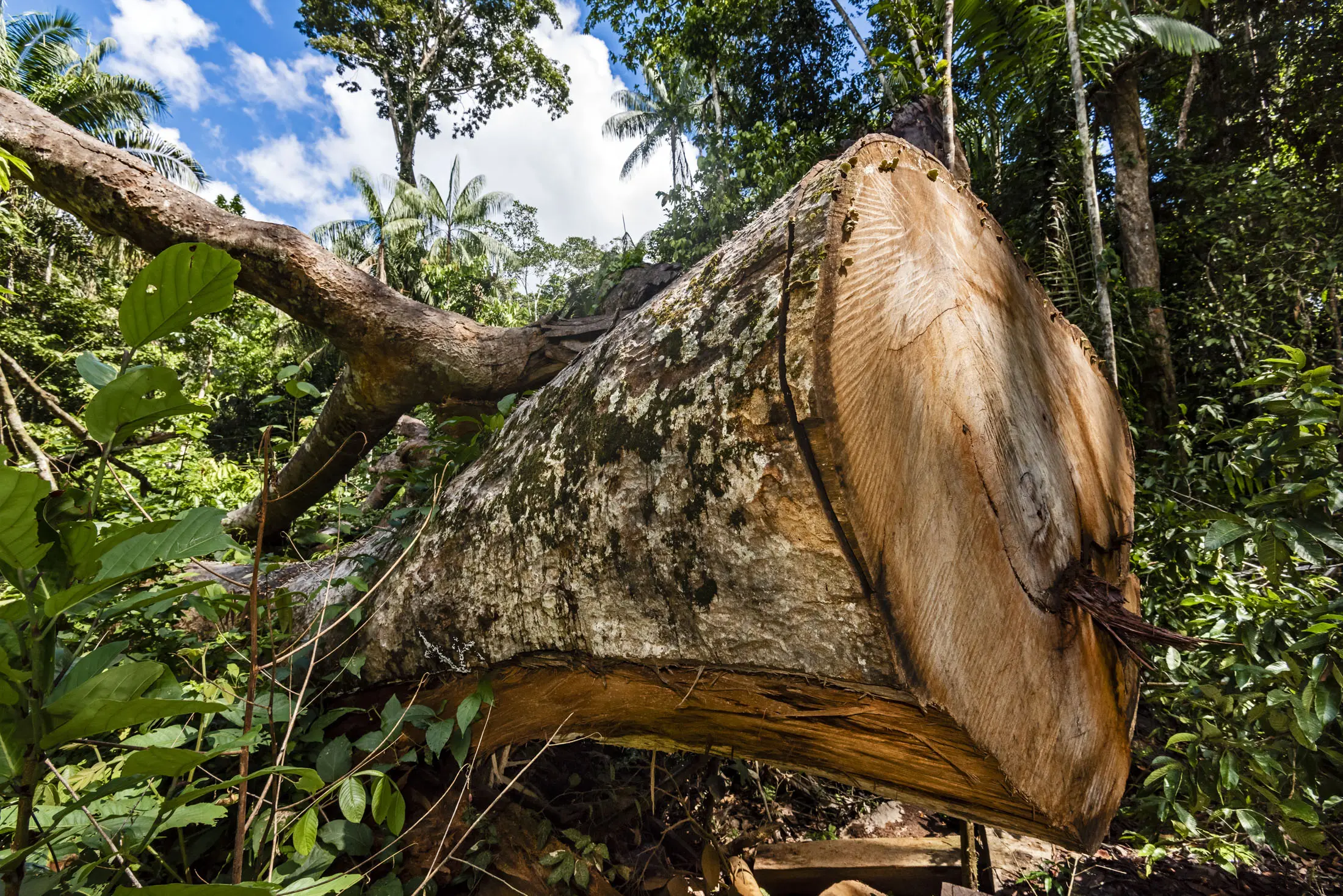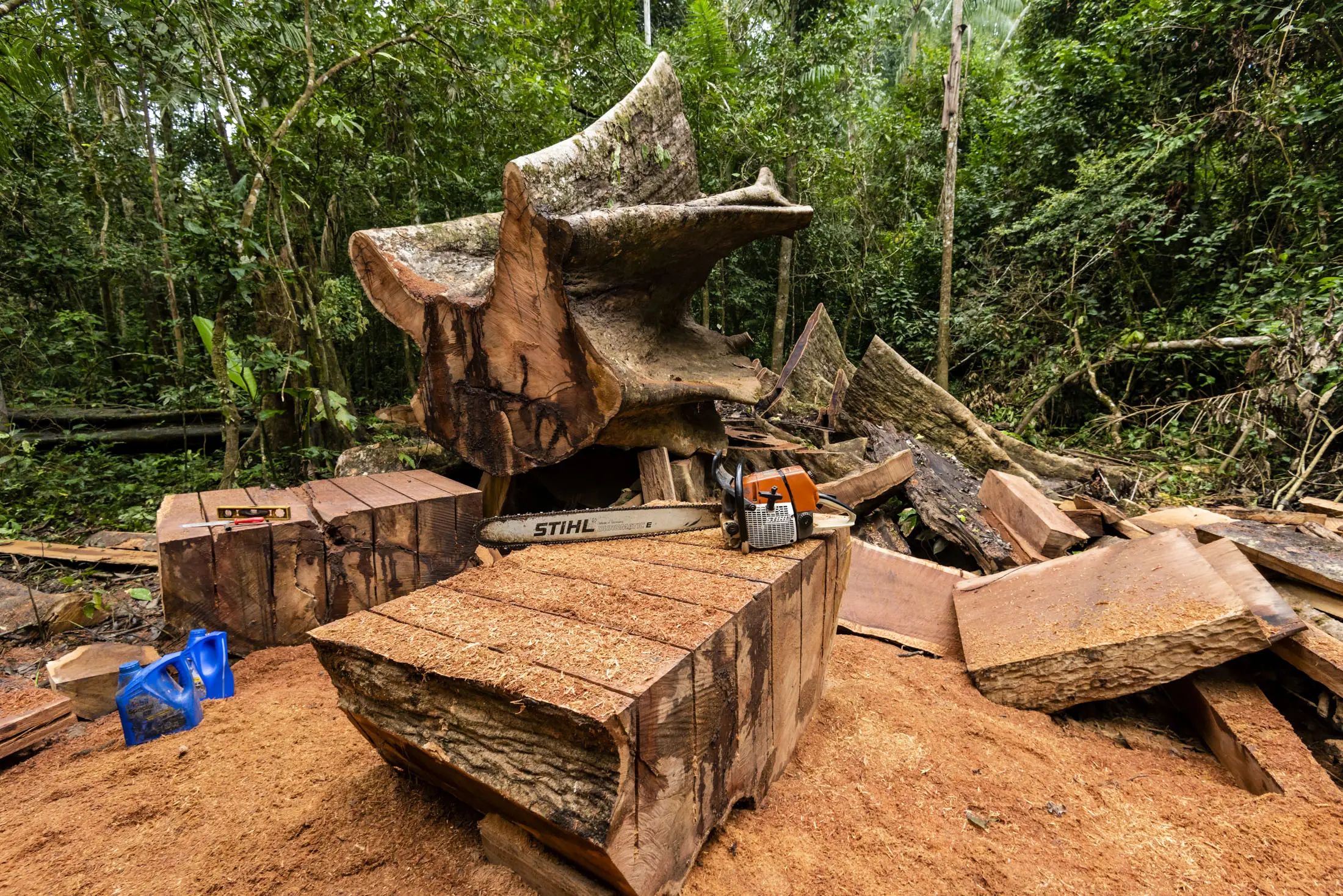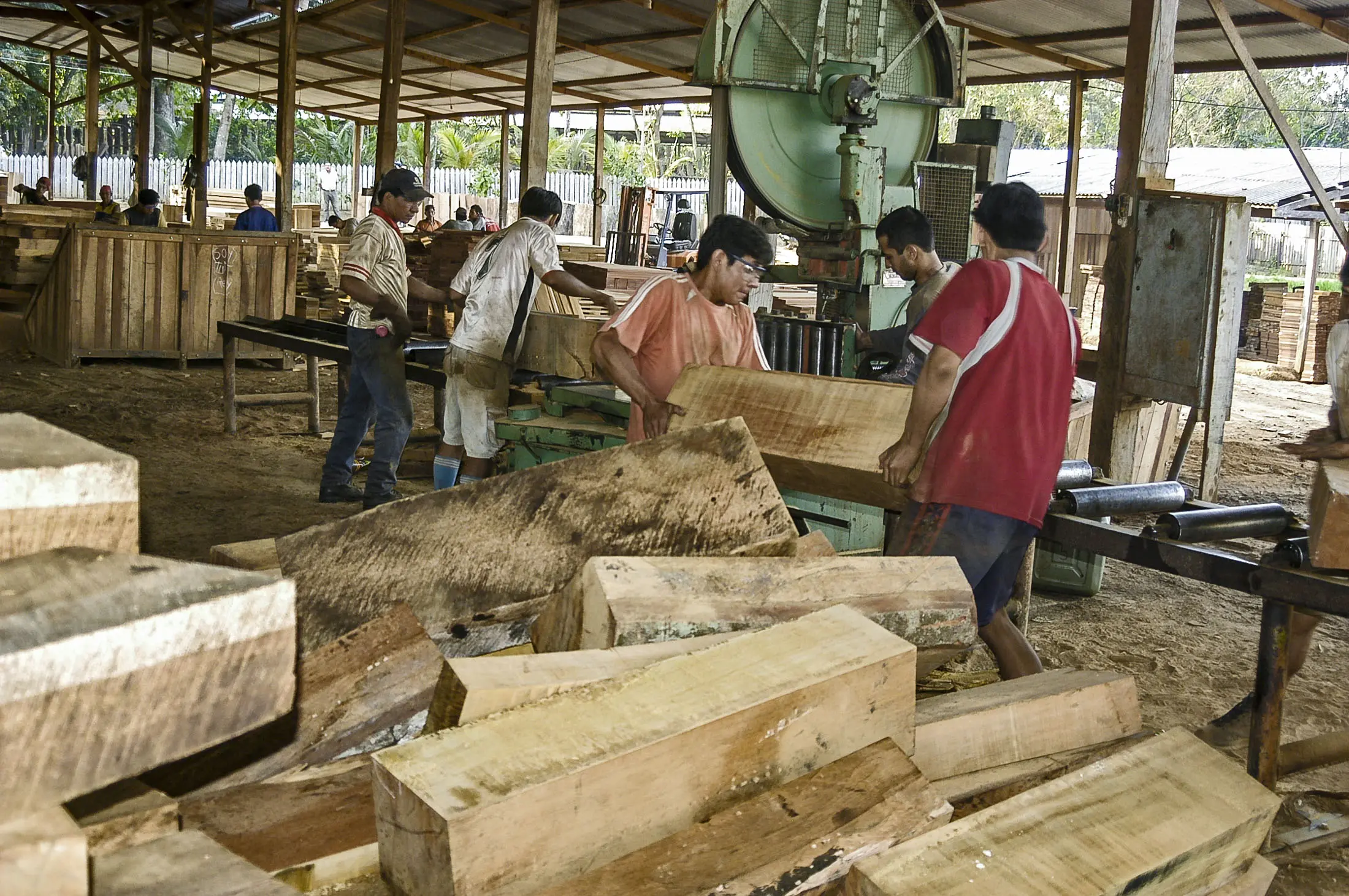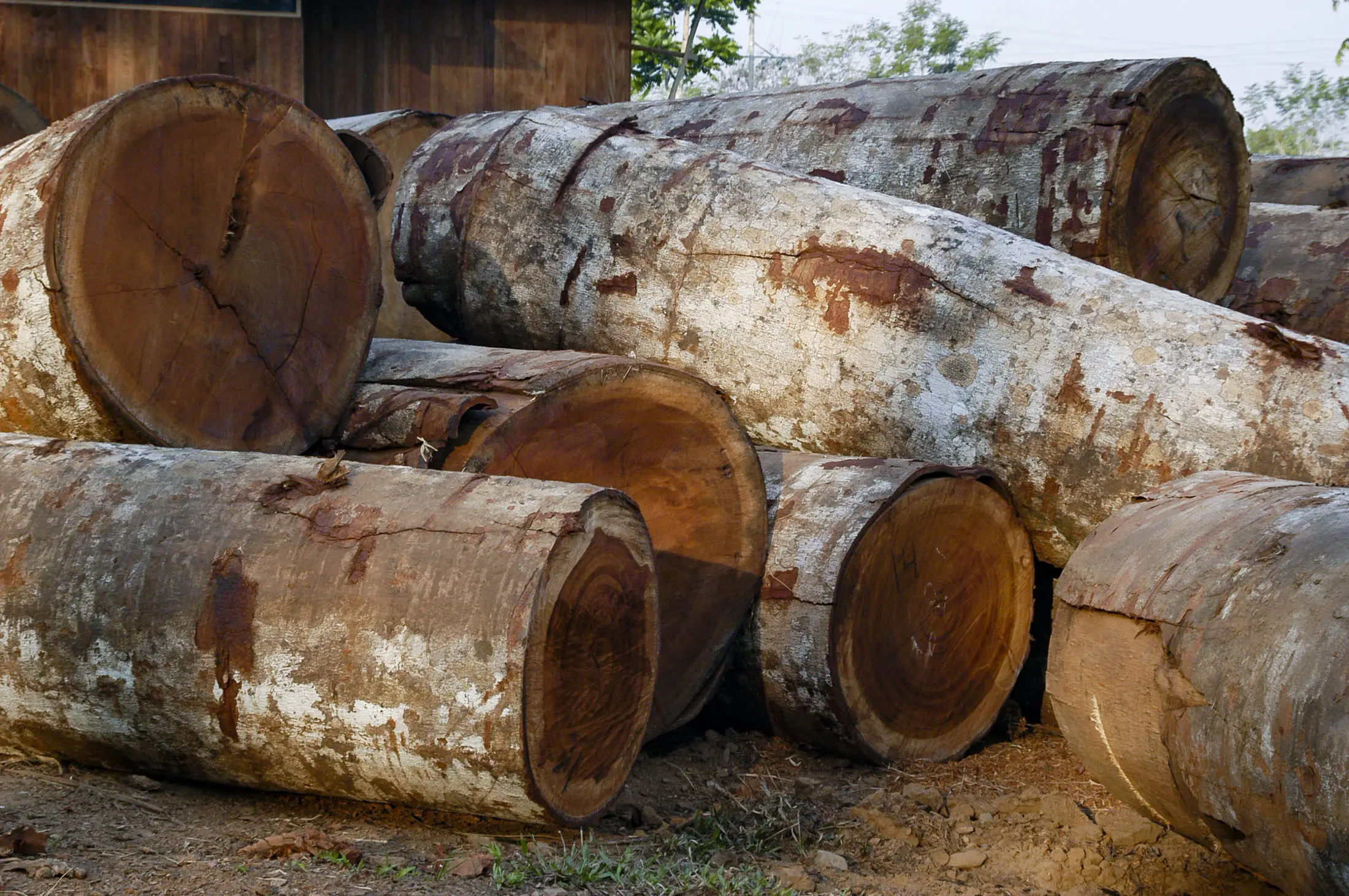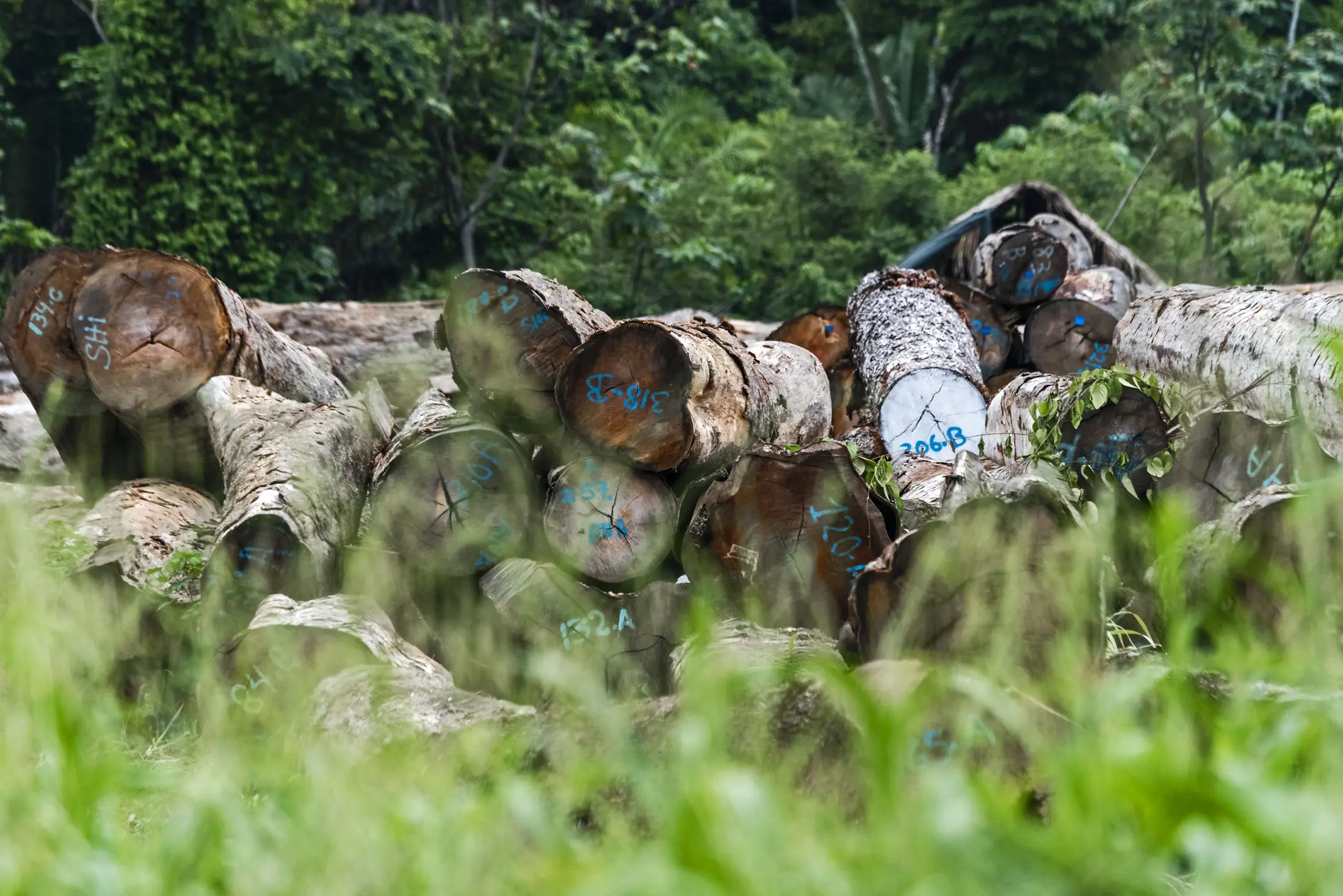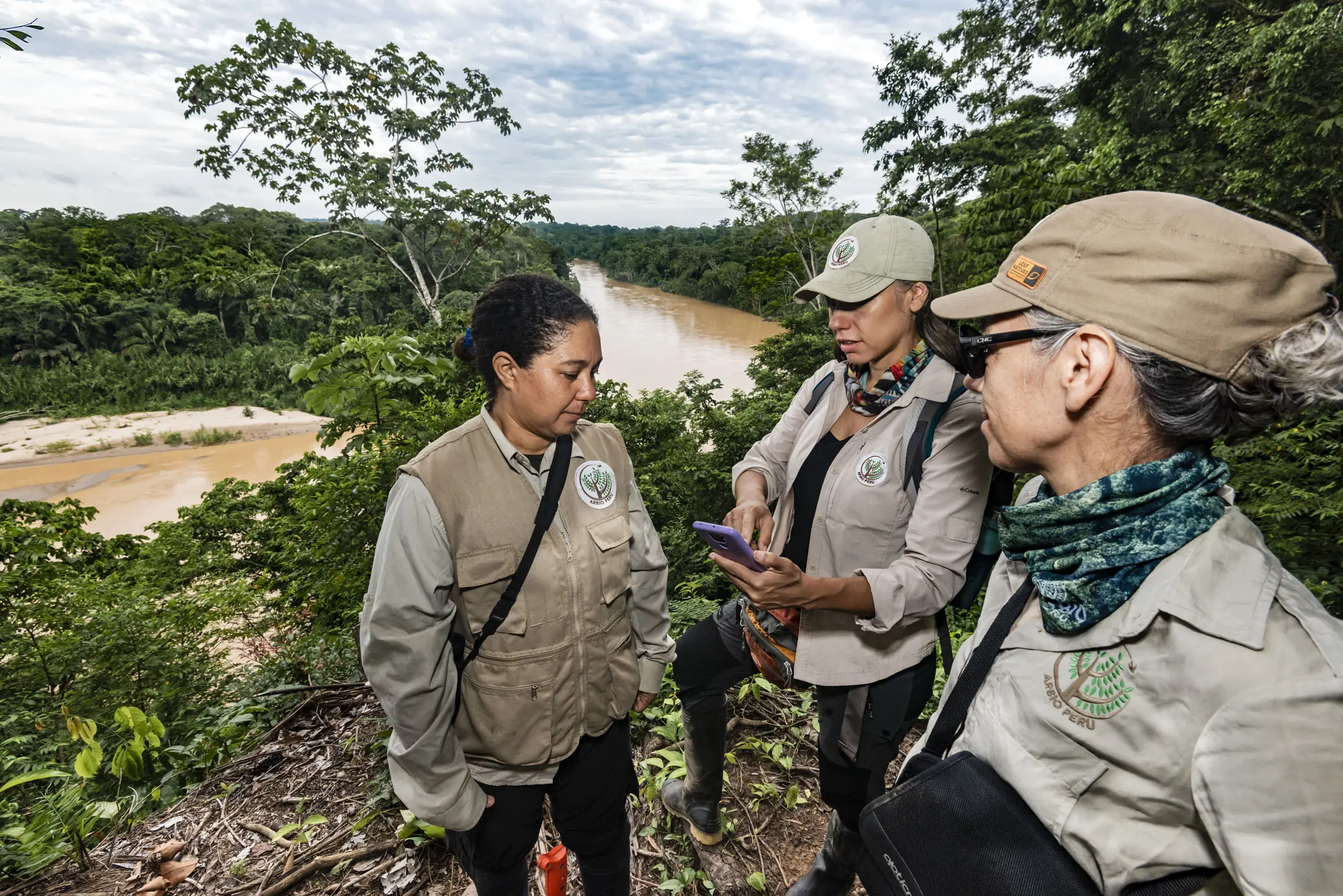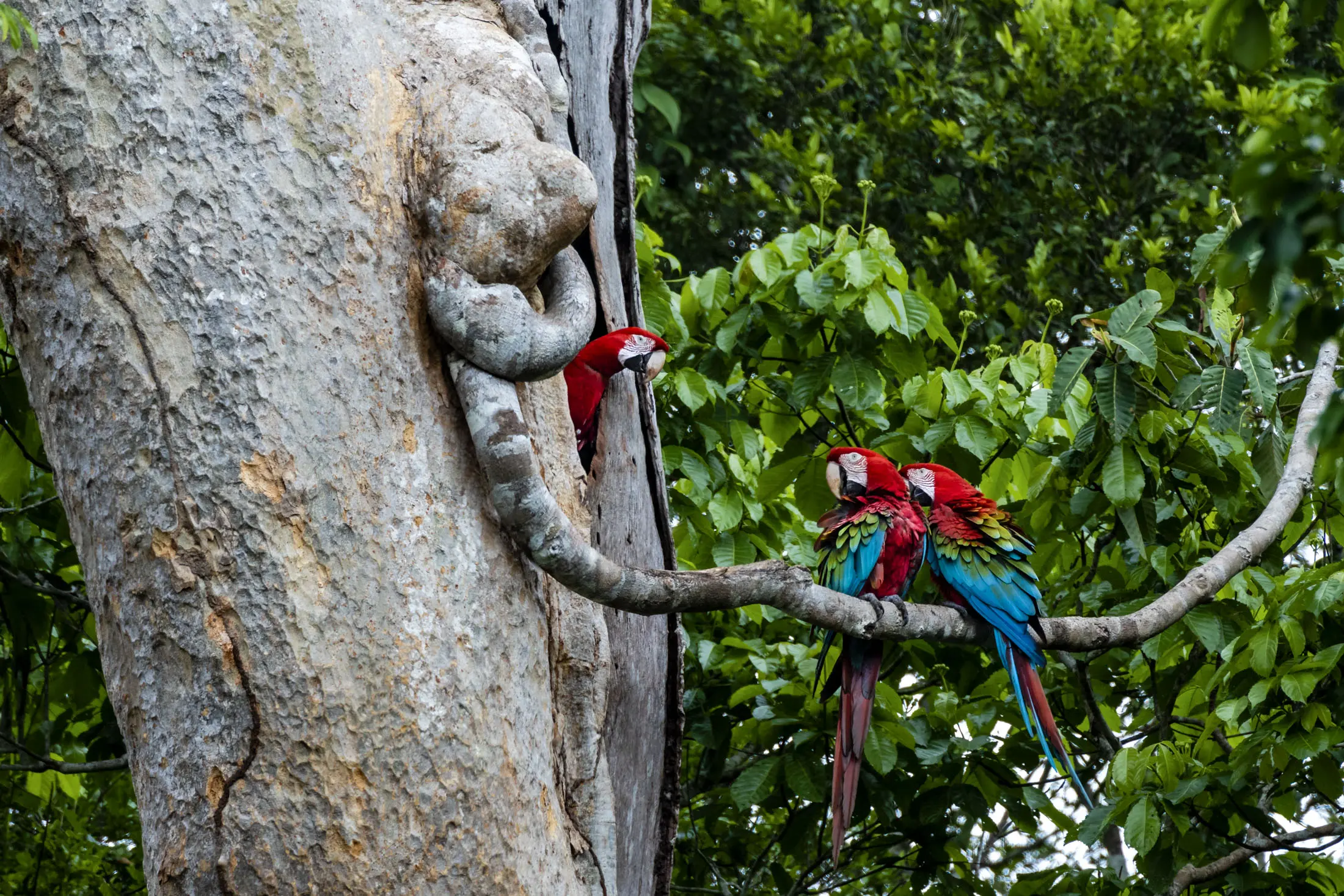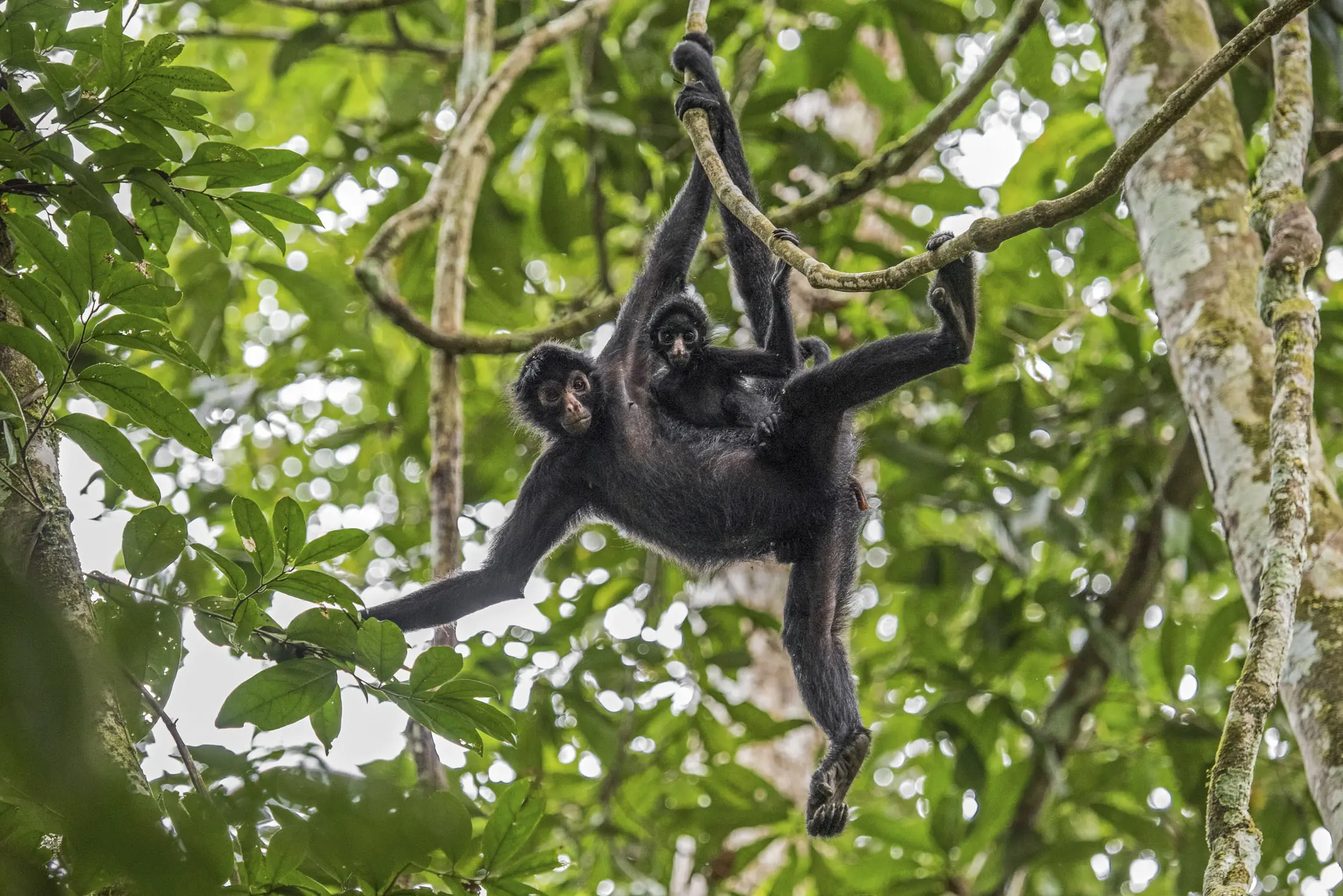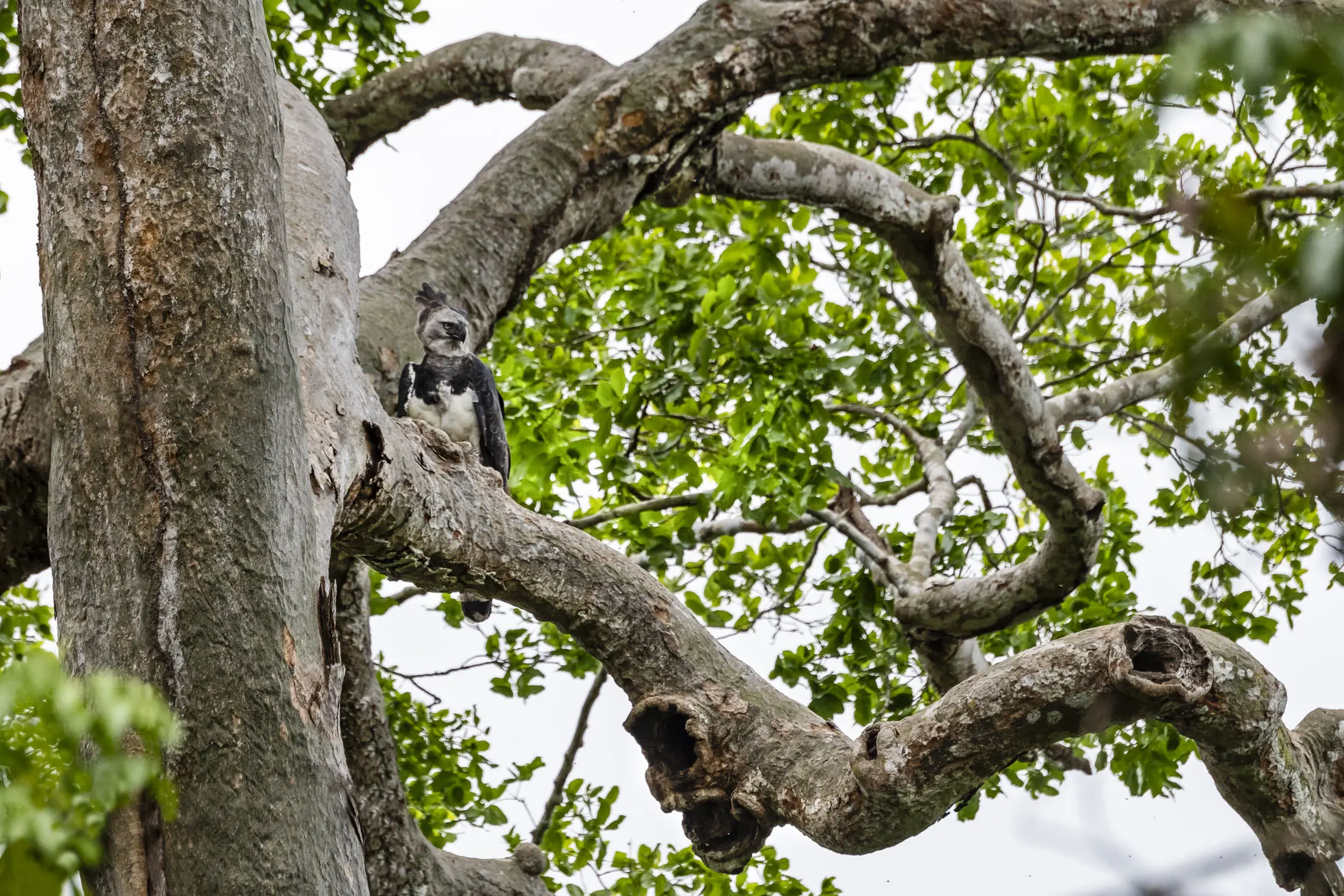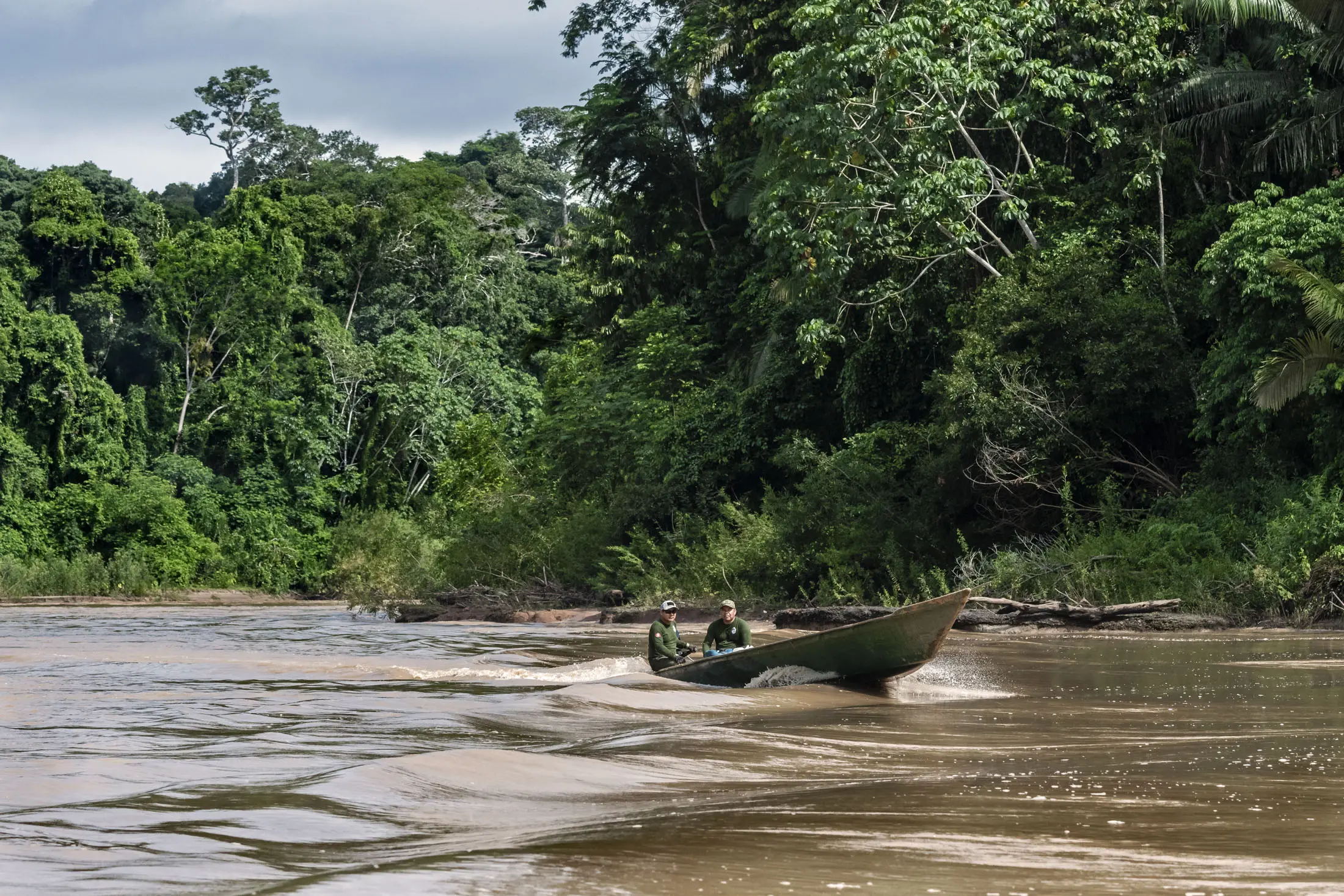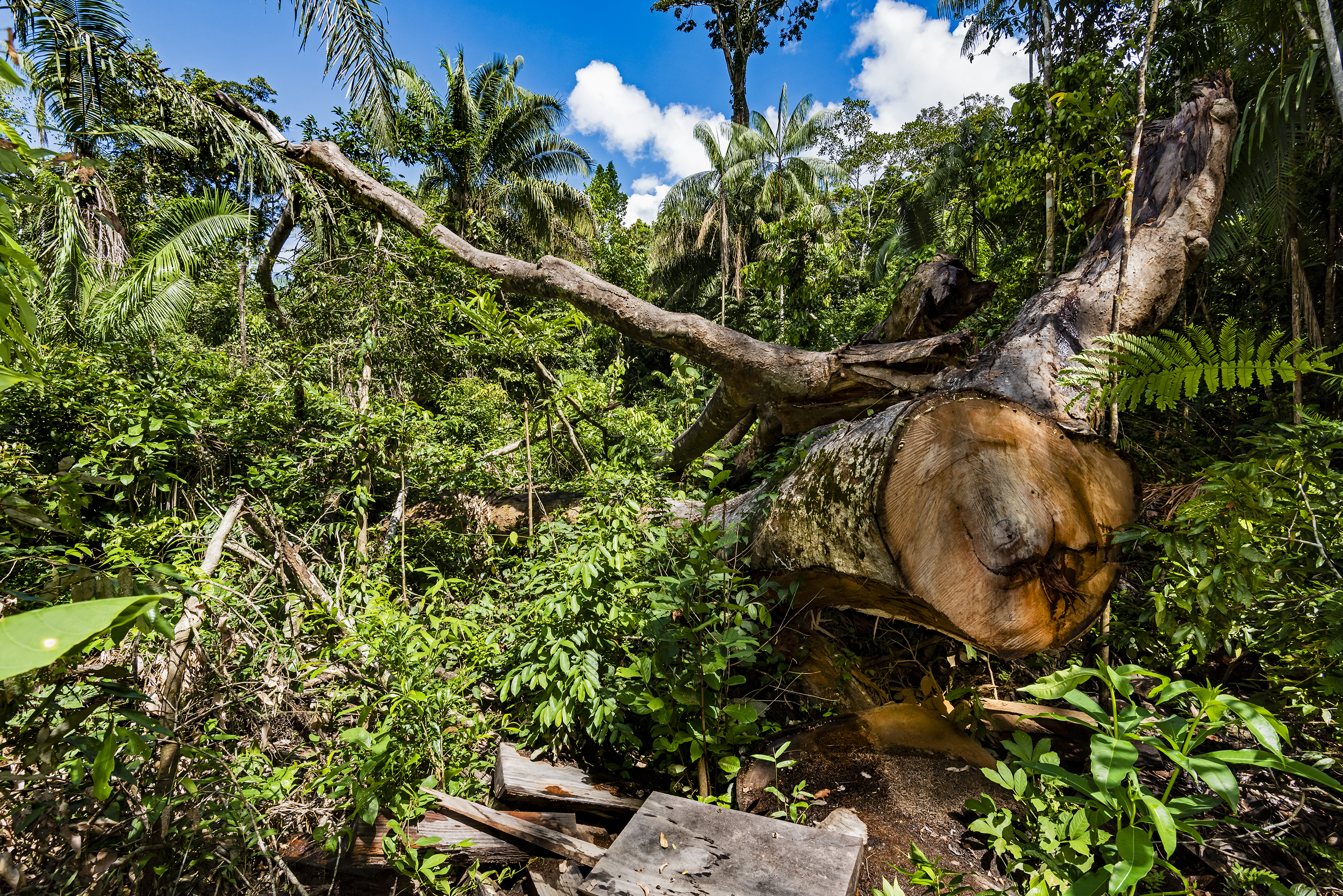This story excerpt was translated from Spanish. To read the original story in full, visit Info Amazonia. You may also view the original story on the Rainforest Journalism Fund website here. Our website is available in English, Spanish, bahasa Indonesia, French, and Portuguese.
Two enormous stumps indicate to Yoni Guevara that something is wrong. The remains protrude as if emerging from an open scar in the extensive forest sheet of a concession along the Las Piedras river basin, Tambopata. They are what remains of two shihuahuacos (Dipteryx spp) that were more than nine hundred years old. Yoni is one of a small group of forest rangers; he has gone from felling trees with a chainsaw to patrolling this land that spreads out like a dense, crunchy carpet, seemingly orchestrated by infinite trills and high-pitched chirps.
He is short and stocky, and moves with agility through the winding paths of the Amazon jungle. He knows the river well; he learned to orient himself and recognize the flora and timber trees during his years as a logger. He was already engaged in this activity by the age of sixteen; first as an assistant and a year later as a cutter. At the end of the last century, the "red gold" fever —as mahogany was called because of the intense color of its wood— attracted a wave of migrants from Ucayali, San Martín, and Ayacucho, who came with the hope of escaping poverty: "We used to be illegal loggers, but small ones," Yoni says. "What we illegal loggers did in the mahogany days is different from what the big logging companies do today. If we compare, now it is total depredation. Our trails were not like these roads that cut down chestnut trees and everything along the way. In those days, the timber was hauled to the river."

As a nonprofit journalism organization, we depend on your support to fund journalism covering underreported issues around the world. Donate any amount today to become a Pulitzer Center Champion and receive exclusive benefits!
Having exploited the timber of one of the most biodiverse ecosystems on Earth, however, does not imply a murky past for Yoni, who now patrols the forests with his fellow Junglekeepers. It would be rare to grow up in Madre de Dios and not train as a logger; it's a way to make a living from local resources when alternatives are limited. Twenty years ago, Yoni earned 16 soles a day for entering the fields to work the wood; today he would earn between 70 and 80 soles a day as a laborer. However, according to evidence from the case of "Los hostiles de la Amazonía" (Sierra Praeli, 2020), who gets the biggest slice of the pie is a chain of officials from various state entities —from the PNP and regional governments to the Sunat and the Attorney General's Office— colluding with large timber businessmen in a mafia-like system.
